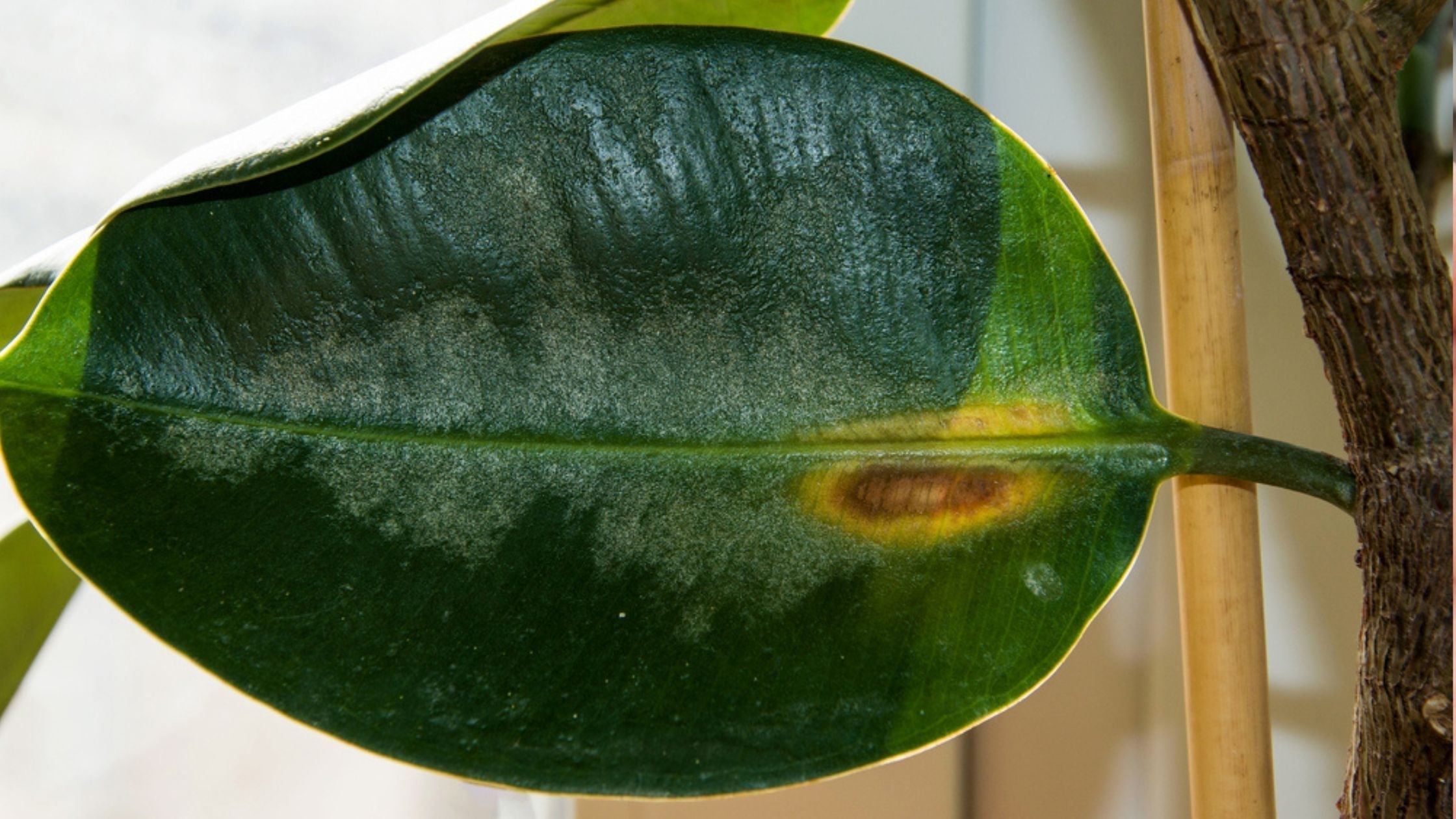
Why are there spots on leaves of my houseplants?
We've discussed how to solve the mystery of drooping plants. Spots on leaves of your houseplant are another good sign that something needs to be fixed, but figuring out the cause is not always straightforward. This article discusses the six most common causes of leaf spots, explains how to identify them, and offers suggestions on how to treat them.
Don't despair! Once you know what is causing the unsightly blemishes, just a few changes to your plant regime can get your plant on its way to perfect health again. Since many of these symptoms look similar, it may take some sleuthing to uncover the culprit of your plants' defects.
Sun damage (Brown spots on leaves)
Do you have a plant in your south-facing window, and you suddenly notice amorphous brown blotches? Possibly with a yellow halo?
Although all plants need light, many of our most common tropical house plants, like monstera, philodendron, and pothos, naturally grow up from the rainforest floor and spend their lives reaching for the light. To replicate this in your home, these plants prefer to be pulled a bit from the harsh light of the south-facing window.
You can prevent sunburn spots by placing these plants in bright but filtered sunlight. Move them away from direct light full-sun windows, use net curtains or blinds, or place them next to a window facing a large tree.
If you describe your leaf spots as amorphous and brown with a yellow halo, but they are NOT kept close to a window or light, you can be sure they are not sunburned. In this case, they are likely due to a fungal or bacterial infection.
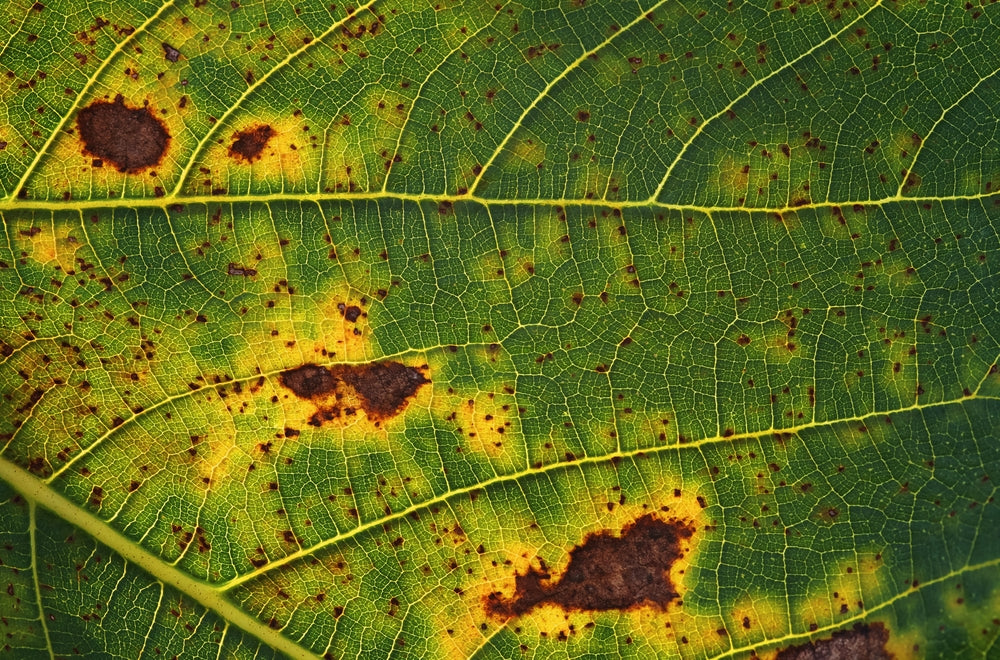
Fungal infection (Brown spots on leaves)
Similar to a sunburn, a fungal infection is marked by small dark brown or rusty colored spots, often with yellow outlines. So if you are seeing that but are sure your plant is not getting enough light, your spots may be caused by a fungal infection.
Many different types of fungus can infect your plant. One of the most common is rust, most commonly seen on garden roses. This fungus can also sneak onto your houseplants, and one plant can infect another. Other plants, like the Dracaena, are infected by their own species of fungus, and you do not need to worry about cross-contamination.
Fungus infections typically occur in humid spots with little air circulation. Houseplants thrive in well-ventilated (but not drafty) locations. If fungus is becoming an issue in your home, try giving your plants a little breathing room. Avoid pushing them extremely close together, and even try to keep the air moving with a gentle fan.
If a fungal infection has taken hold, make sure to remove all infected leaves and dispose of them away from your plant. Use a rag with disinfectant as you prune to keep your shears clean and prevent the spread of the infection. If fungus is still infecting your plant, try spraying it with a mild mixture of 1/4 teaspoon baking soda and 1 quart of water in the morning, when your plant will have the warmth of the day to dry completely.
Also, remember that not all fungus is bad. Mushrooms growing in your planter can often be a sign of healthy soil and a vibrant mycelial network. A good rule to follow is that most fungus in the soil is normal and can live in harmony with your house plants. When you start to see fungus infecting your leaves, the crown of your plant, or the roots of your plant, you need to take action.
Similar environmental issues often cause leaf spots caused by bacteria and can be treated similarly.
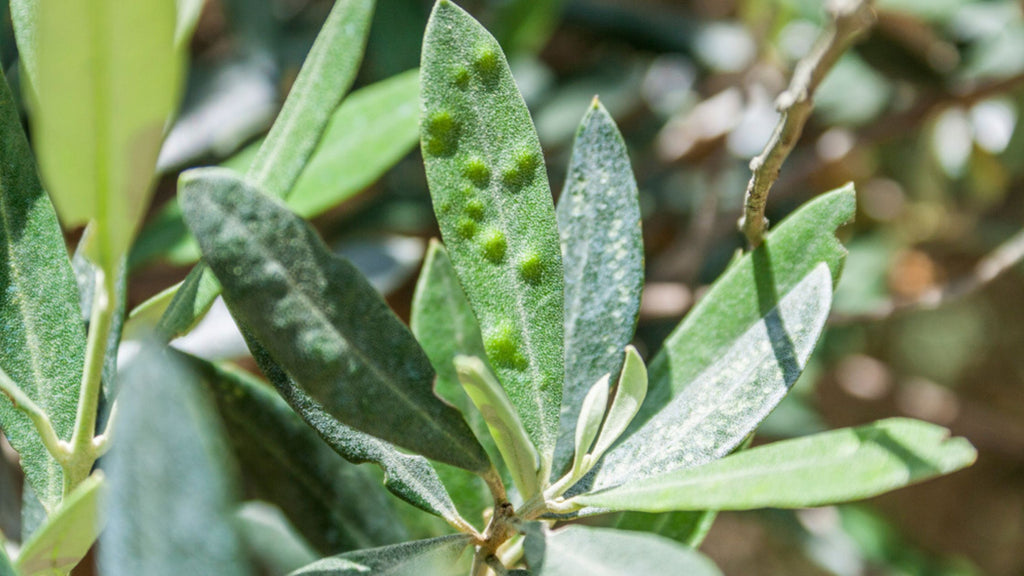 Bacterial infection (Translucent spots on leaves)
Bacterial infection (Translucent spots on leaves)
Bacterial infections happen when bacteria enter the leaf, rotting the tissue from the inside. This typically presents as small round spots that first appear translucent and sometimes can form that typical yellow halo.
Because we often create a humid environment for plants like staghorn ferns and lady's slipper orchids - these plants are frequently infected with bacteria.
Just like fungal infections, to prevent bacterial infections, make sure your plants are in a well-ventilated area, free of drafts, and that they have a little breathing room from other plants.
Although it can be challenging to determine if bacteria or fungus caused brown spots on leaves, the good news is that you can treat both with the same mild baking soda and water mixture.
Bacteria more commonly spread from plant to plant, so be sure to quarantine and change your regime to prevent an outbreak. If you have been keeping it in a heavily humid environment, move it to a drier space. Stop misting the leaves, and keep the plant as dry as possible to prevent recurrence.
You can spray the plant with bacterial fungicide or baking soda as you would for a fungal leaf infection. You should also cut off any infected leaves and disinfect your shears between each use.
 Overwatering (Raised brown bumps on leaves that can't be wiped off)
Overwatering (Raised brown bumps on leaves that can't be wiped off)
Overwatering is one of the most common problems in house plant care. It can cause leaves to look as if they are melting and drop off or lead to edema, a plant condition presenting as raised corky bumps on the underside of the leaf that cannot be removed. These blister-like spots occur when environmental conditions are unsuitable for the plant, especially when over-watering is combined with high humidity. It can also happen when slow-growing plants receive too much fertilizer.
Overwatering typically does not mean that you drenched your plant with too much water at once. It means that you are watering too frequently. Most plants want to dry out a bit before being watered again. Make sure that you check your drip trays. Sometimes, overwatering occurs because plants are just sitting in the moisture.
While the bumps are permanent, edema is much less serious than the pest-related spots. If the edema is unsightly, remove the leaves and find a watering routine that works for your plants.
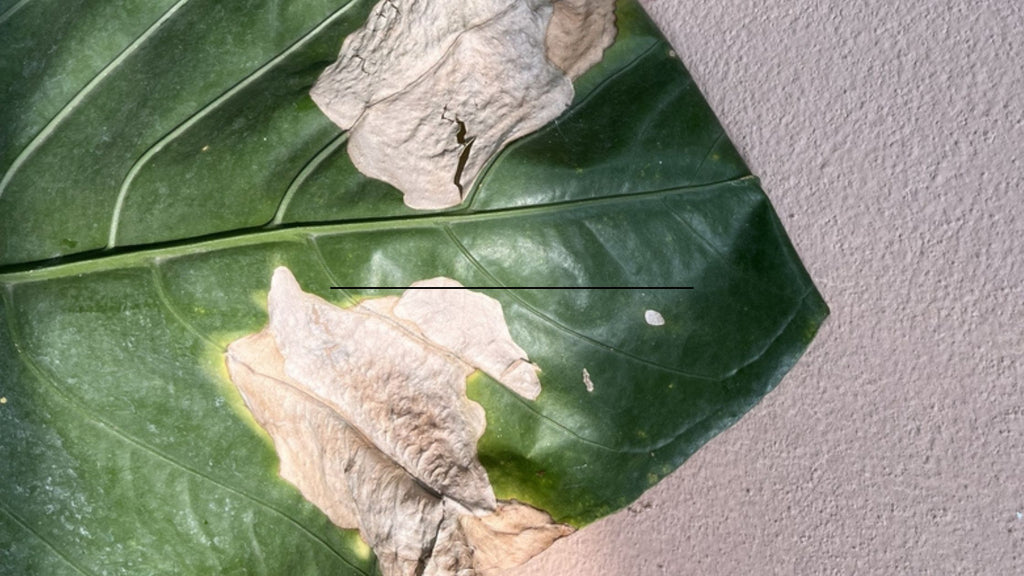 Cold water damage (white or yellow spots on leaves)
Cold water damage (white or yellow spots on leaves)
Did you ever hear the advice - "Just drop a couple of ice cubes in each of your plants to slow water them and prevent over-watering"? For the love all of things green, DO NOT DO THIS. It's equivalent to your plants hanging out on a nice, balmy spring day, and then suddenly, the soil turns to winter temperature.
If your plant has white or yellow spots and rings on the foliage and you have been watering with leftover ice water or the coldest water from your tap, you may be seeing the effects of cold water damage. Orchids are particularly fussy about water temperature.
Make sure you water and mist your plants with room-temperature water. And please leave ice cubes out of it.
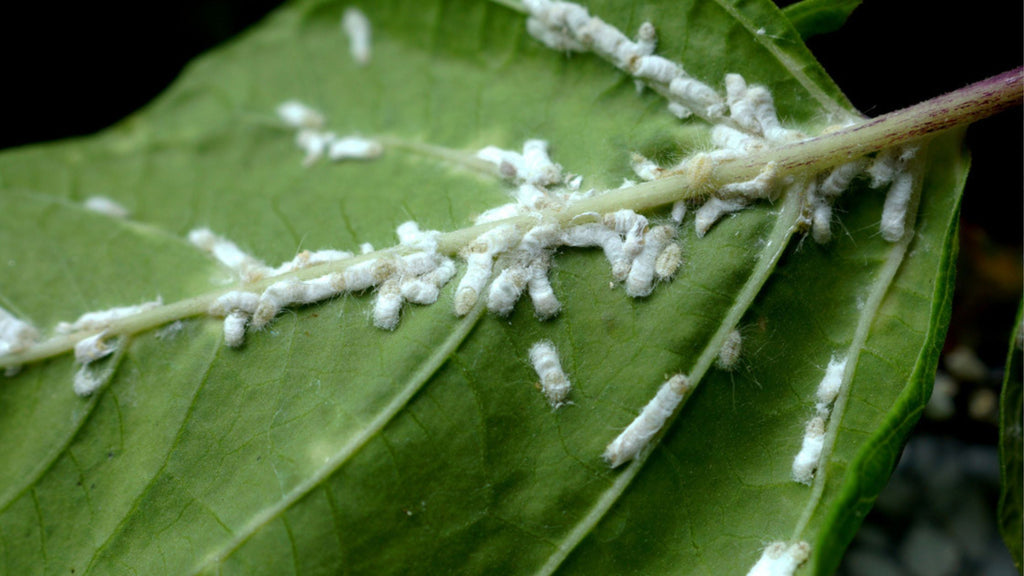
Mealy bugs (white spots on leaves that wipe off)
If you see small white spots on your leaves, the first thing to do is see if they can be wiped off. If they are a little smaller than a grain of rice and you can easily remove them, you are likely dealing with mealy bugs. This probably doesn't qualify as a leaf spot, but they are so common that it feels important to address them.
Mealybugs are tiny insects that produce a sticky, cotton-like substance on the leaves. If you leave this untreated, the insects will feed on the sap of your plant until it dies.
Mealybugs are persistent but can be eliminated, and the damage they cause is typically very slow. To treat:
- Immediately separate infested plants to stop the bugs from spreading.
- Remove the critters manually using cotton swabs or similar dipped in rubbing alcohol. Ensure you check under the leaves, in the crevasse, and at the crown of your plant where they are likely to be hiding.
- If you continue to have a problem, spray the plant with an organic insect soap each week for several weeks to kill any remaining bugs on the plant.
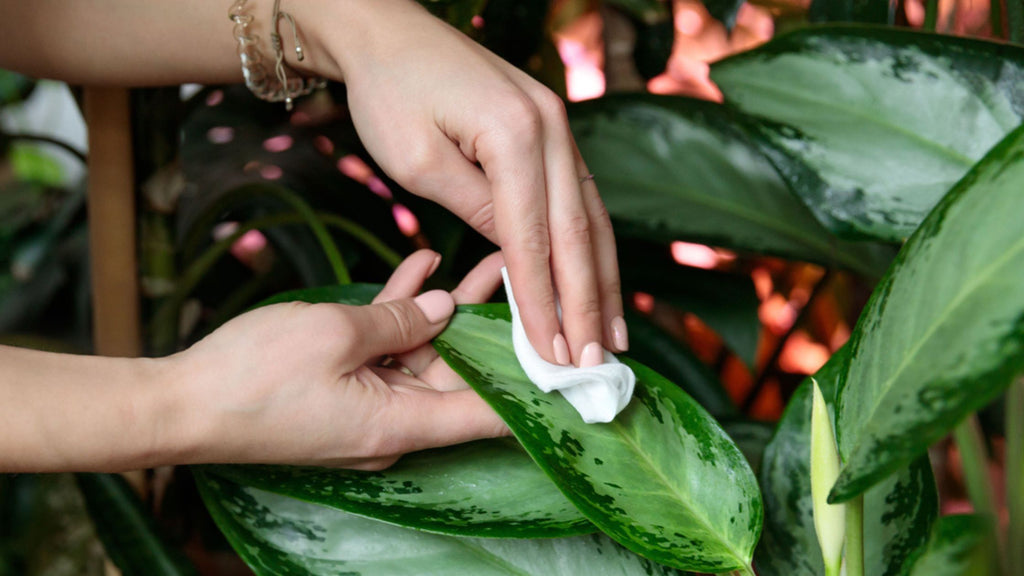 Water marks on leaves
Water marks on leaves
If you attempt to wipe off the white spots, but they require a little scrubbing, you may be dealing with water stains on your leaves. Humidifiers and regular misting often exacerbate this problem, leaving behind white, crusty minerals when the water dries.
Although this is not a pathological condition, leaving the water spots on your leaves will prevent transpiration and photosynthesis, stunting your plants' growth and maybe even killing them.
Regularly inspect leaves for hard water marks, and keep your plant wipes handy to remove buildup, dust, or grime easily. Just remember to change your rag between each plant to prevent the spread of disease.
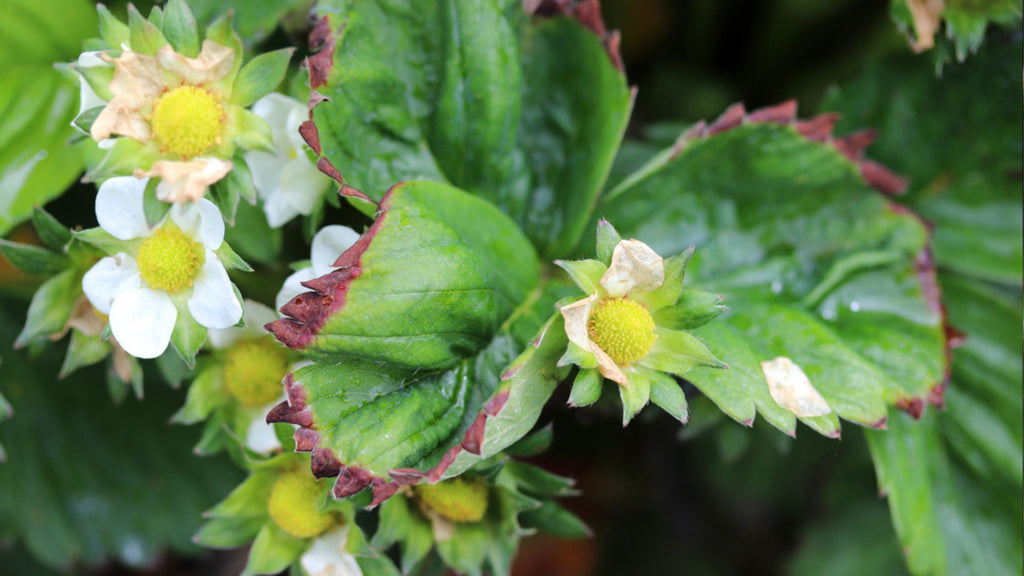 Mineral deficiencies (leaf discoloration)
Mineral deficiencies (leaf discoloration)
If you notice leaf discoloration but it doesn't seem to be any of the above issues, you may be dealing with a mineral deficiency. Mineral deficiencies are more common in outdoor plants and neglected older plants.
Houseplants usually come from garden centers in fertilizer-enriched soil, but they may have been living in that pot for months or even years before they got to you. Houseplants cannot spread their roots beyond their pots to find the nutrients they need, so it is essential to ensure that you feed your plant regularly.
We've covered the most common answers for how to treat brown spots on leaves and other plant blemishes. Like many plant symptoms, leaf spots can have several causes. Figuring out what lies behind the blemishes will require a little detective work to determine which situation is targeting your plant.

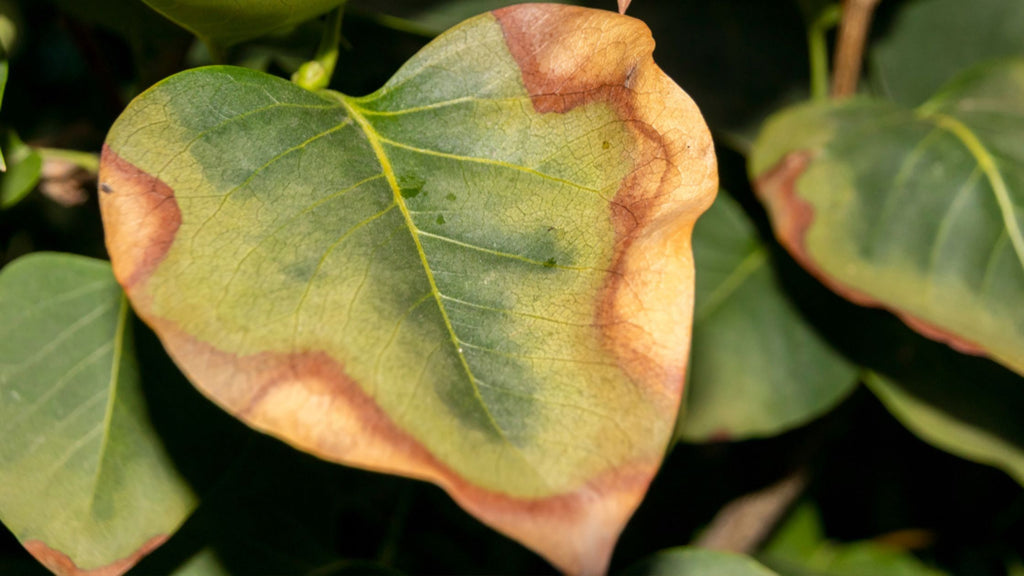
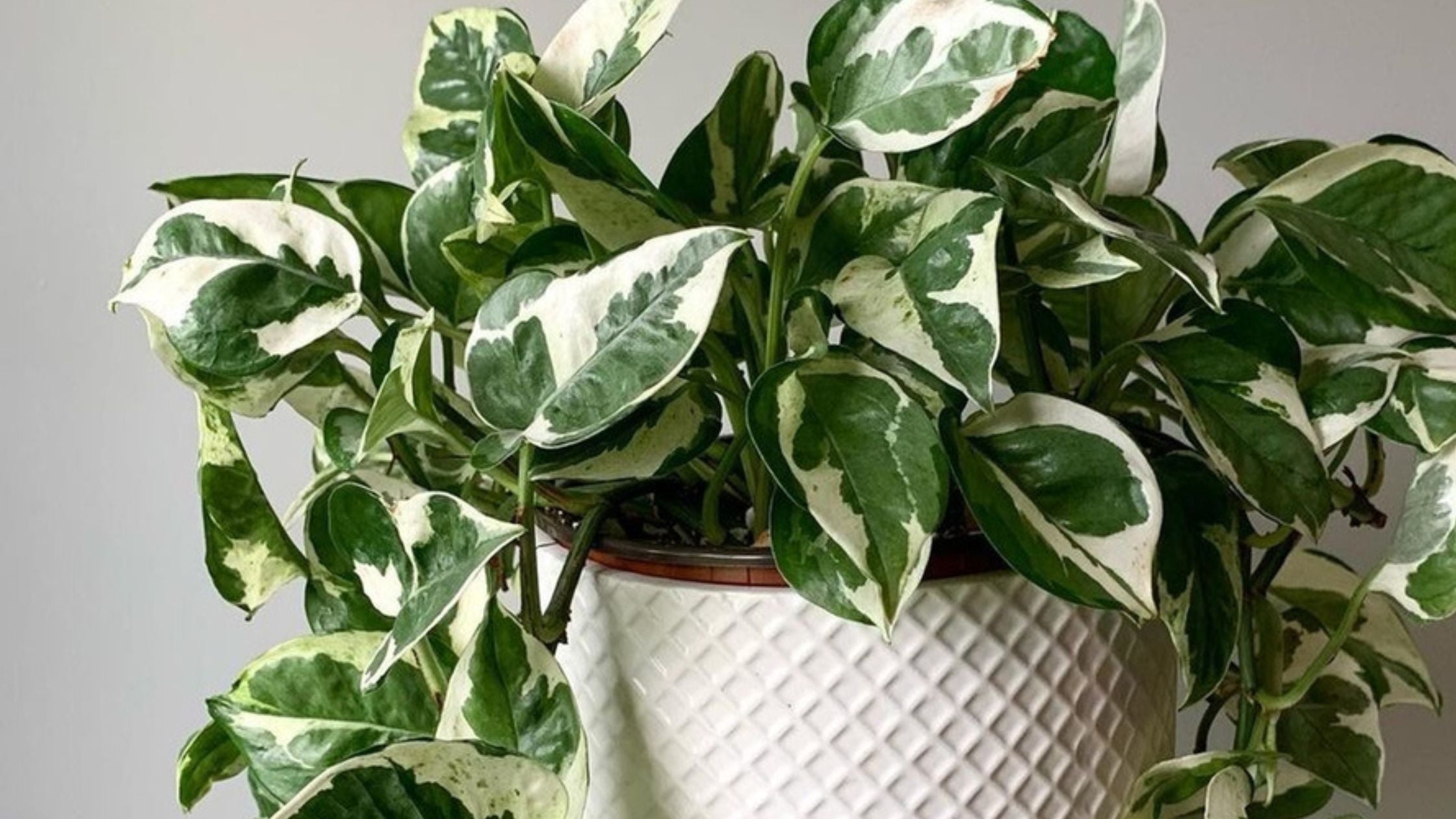
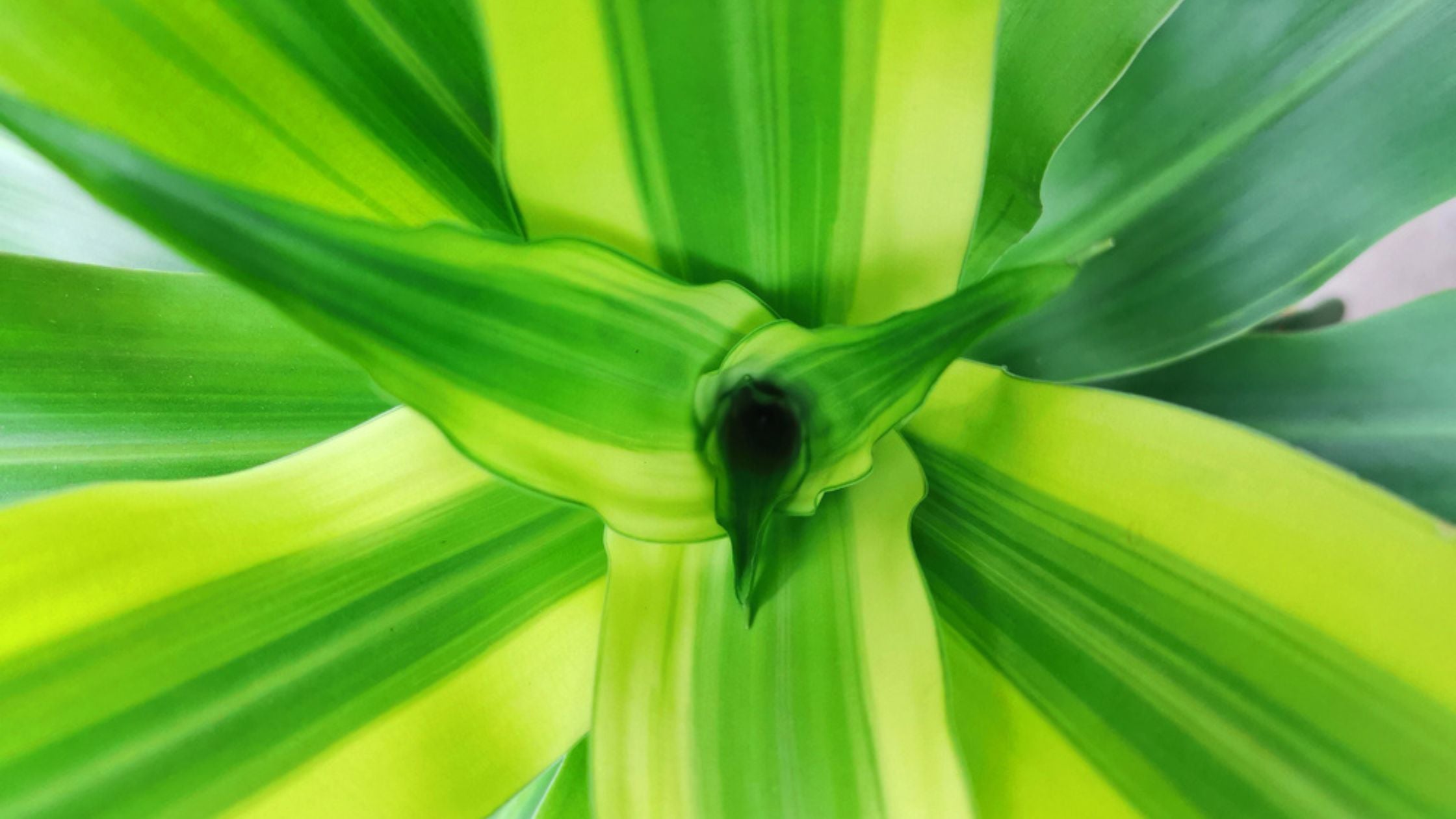
Leave a comment
This site is protected by hCaptcha and the hCaptcha Privacy Policy and Terms of Service apply.